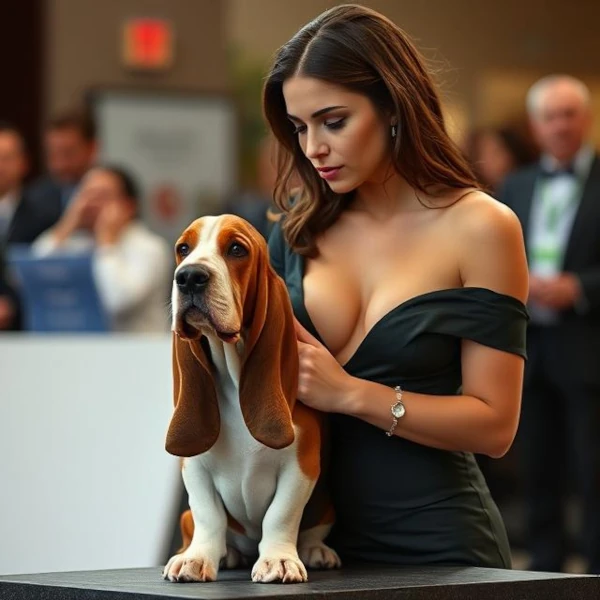Westphalian Dachsbracke: Elegance and Distinction in Beauty Contests
The Westphalian Dachsbracke, or Westphälische Dachsbracke, is a lesser-known but charming German breed. With its robust build, intelligent expression, and characteristic tricolor coat, this hunting dog has all the qualities to shine in canine beauty contests. Here's how to prepare your Westphalian Dachsbracke for competition.
Westphalian Dachsbracke in the Spotlight
Although primarily used as a hunting dog, the Westphalian Dachsbracke has remarkable aesthetic qualities. Its compact size (30-38 cm at the withers), muscular body, and proud head carriage make it an interesting subject for contests. For example, its high-carried tail and lively gaze express confidence and vivacity, valuable assets in front of judges.
Breed Standards: What Judges Look For
The FCI standards specify that the Westphalian Dachsbracke should present:
- A short, dense, and rough coat, typically tricolor (black, tan, and white)
- A noble head with a marked stop and black nose
- Drooping, rounded, and well-attached ears
- A straight back and well-developed chest
For example, an ideal specimen weighs between 15-20 kg and has well-defined tan markings above the eyes, on the muzzle, and legs.
Physical Preparation: Highlighting Its Build
This active breed requires good physical condition:
- Daily walks (at least 1 hour) to develop musculature
- Swimming exercises to strengthen the back without joint impact
- Balanced diet to maintain optimal weight
A successful example: "Hector," the 2021 champion, followed a program of 3 daily outings combining walking and controlled sprints.
Grooming: Enhancing the Tricolor Coat
Grooming the Westphalian Dachsbracke requires special attention:
- Weekly brushing with a rubber curry comb
- Regular ear cleaning (risk of ear infections)
- Nail trimming every 3 weeks
- Monthly bath with shampoo for rough coats
Tip: Before the contest, use a grooming glove to make the coat shine without making it too soft.
Ring-Specific Training
Adapt the training to its hunting temperament:
- Practice leash walking with distractions (scents, noises)
- Work on static posture with food rewards
- Gradually accustom to manual inspections (simulation of judging)
Example: Train your dog to maintain the position for 30 seconds after each meal, rewarding stillness.
Presentation Techniques
Highlight its particularities:
- Present the head slightly raised to show the marked stop
- Maintain the tail naturally curved (do not force the position)
- Clearly expose the tricolor markings to the judge
Tip: During movements, keep the leash slightly slack so the dog shows its natural and powerful gait.
Appropriate Accessories
Choose carefully:
- Fine leather leash (about 1 cm wide)
- Simple flat collar (black or brown)
- Avoid any colored accessories that distract from natural beauty
Example: Judges appreciate plain collars that do not interfere with evaluating neck proportions.
Success Stories
The Westphalian Dachsbracke is gaining popularity in contests:
- 2023: "Bella vom Teutoburger Wald" - Best of Breed in Dortmund
- 2022: "Django" - Rated Excellent at the French Championship
- 2021: "Lotte" - Young Hopeful at the World Dog Show
These successes prove that this lesser-known breed can compete with more prominent rivals.
The Star Breeds of Dog Shows
© 2023 touslestoutous.com − All doggies. All rights reserved.
"The data available on this site may be used provided that the source is duly acknowledged."
